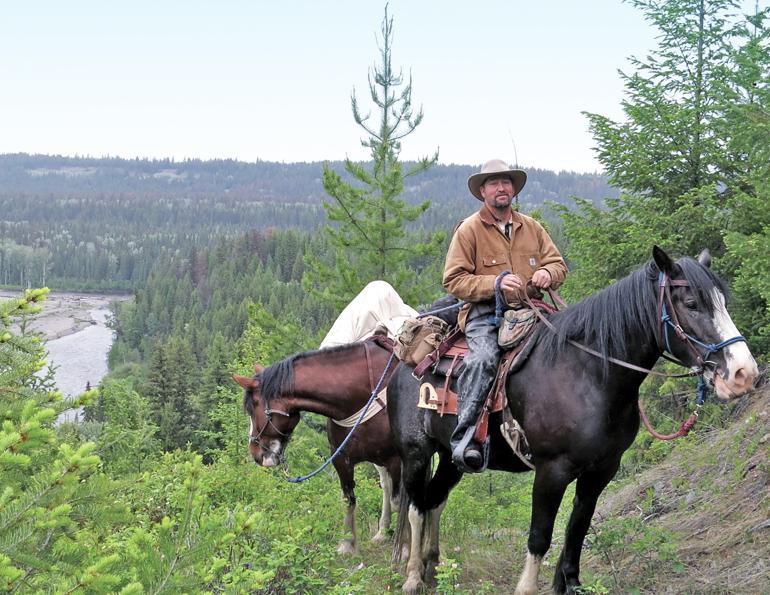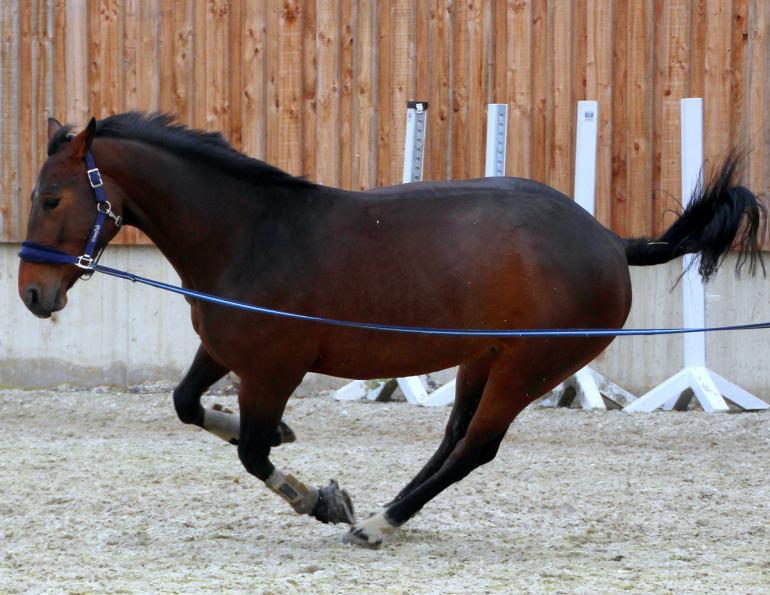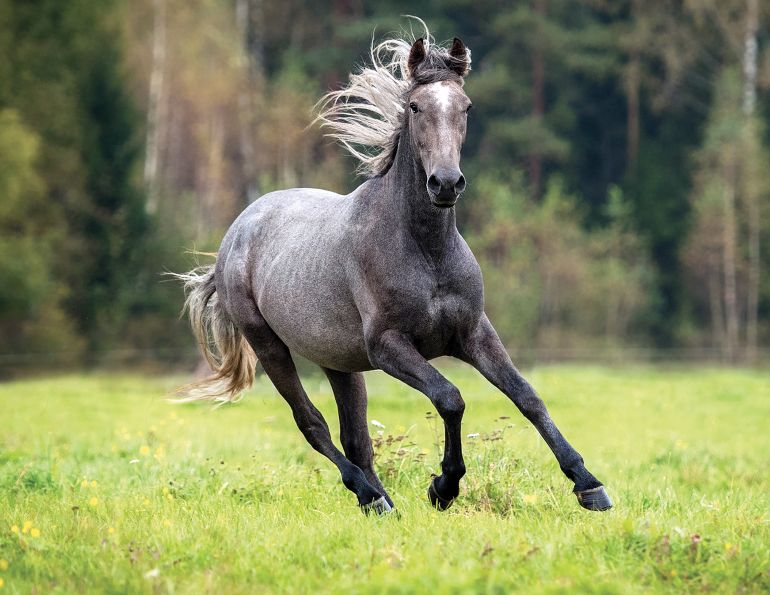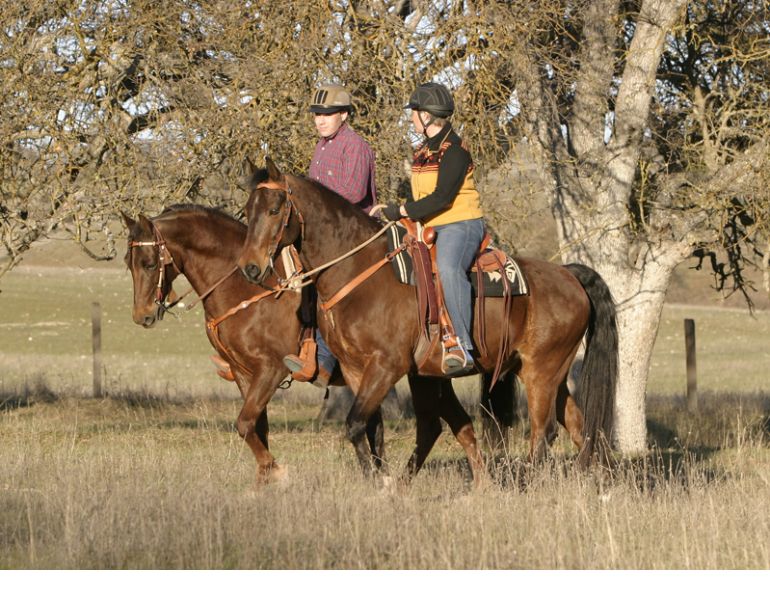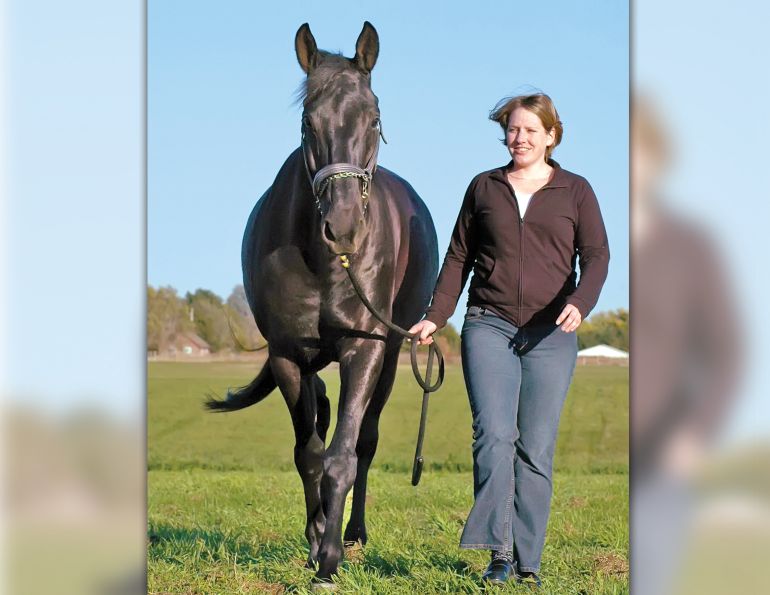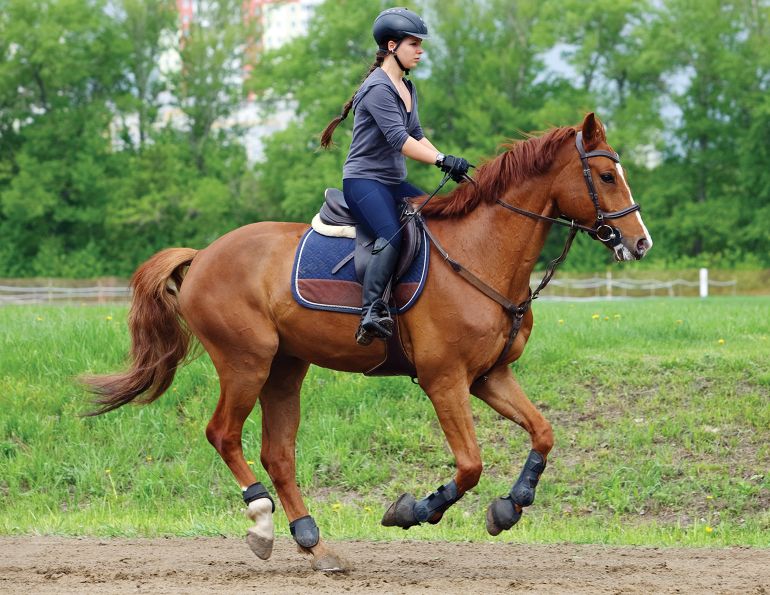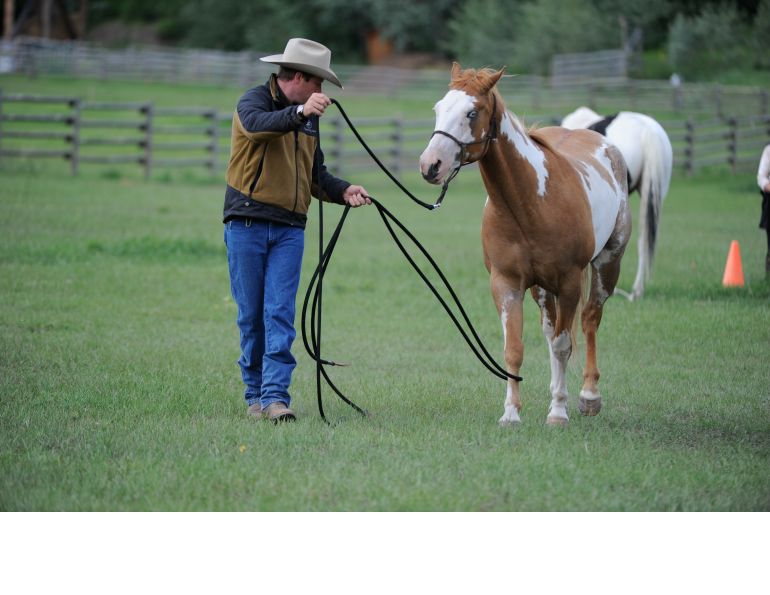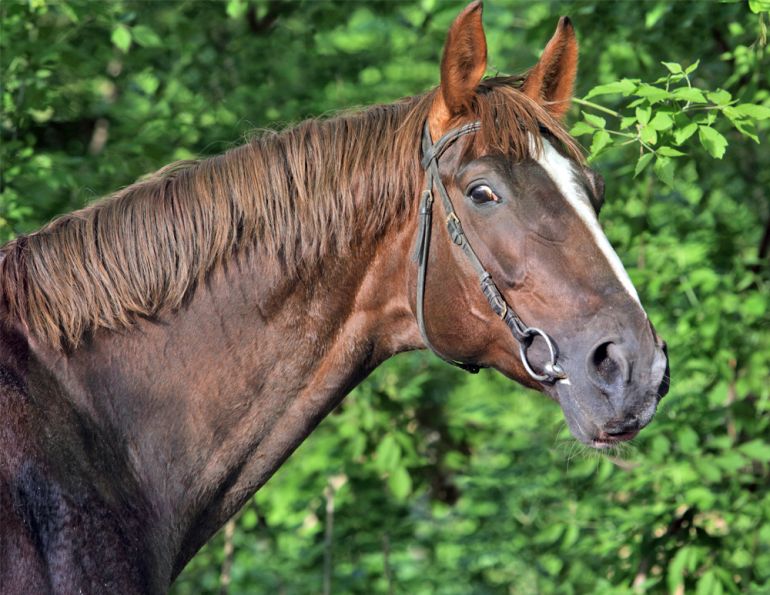How to keep the horse moving by modifying work routines.
By Jec A. Ballou
When an injury occurs, it is prudent to inactivate the horse for a short period. In less defined scenarios, however, we owe it to our horses to understand that movement itself is therapy, or at least certain types of movement can be. Exercise is not always something that reduces or diminishes a horse’s well-being. More often, it improves overall welfare, and for this reason eliminating exercise must be reserved for only extreme scenarios.
When a horse’s performance and comfort seem to decline from physical causes such as muscle soreness or imbalance, “kissing spine” (overriding dorsal spinous processes), ulcers, stiffness, or reasons that are hard to define, it is logical to change his current exercise plan to allow the body to repair. Change, however, is not the same as elimination. Rather than assuming all movement will worsen any underlying discomfort, the question should be: How to modify the current routine to keep the horse moving daily?
It is worth noting that modification does not mean just doing a shorter version of the horse’s normal activities. It means finding ways to move the horse’s body without complexity and intensity. For instance, if your dressage horse’s gaits have been irregular but the vet cannot find an injury or explanation, do not cease activity entirely. Nor should you proceed by shortening your daily ride and hoping for the best. Instead of your same-old arena sessions, find exercise that is a lot less taxing and that your horse can perform for approximately 30 minutes.
Related: Creating an Equine Fitness Program
Related: Equine Lameness Evaluation

Movement is therapy. Discover the movement your horse can do in comfort while he returns to full functionality, even if it’s several short hand-walks throughout the day, or a quiet trail ride on loose reins. Photo: Clix Photography
Generally, it helps to consider the three points outlined below. Remember, your goal is to discover what movement your horse can do comfortably while you wait for him to regain 100 percent functionality. Maybe you discover he feels stiff and cranky in the arena when you ride circles and ask for a working trot with rounded topline, but he will meander comfortably down the trail on loose reins. Or you notice that he gets irregular when you sit the trot as normal but travels sound if you post the trot or ride two-point position. Perhaps you determine the horse can walk beautifully and perform all kinds of manoeuvres, but any gaits faster than that look vaguely lame. Or maybe you decide the horse is only capable of multiple short bouts of stretches and hand-walks throughout the day. The point is to commit to what he can do until you solve the larger issue.
1. Modify the Dominant Gait or Speed
Muscle imbalance, hypertension, and soreness — not to mention faulty muscle activation — can cause a surprising number of gait irregularities. This is especially true for horses that spend most of their working time in a particular gait. Many Western performance disciplines, for example, spend the majority of their schooling time each day loping. In several cases when one of these horses begins showing irregularity — tail swishing, poor posture and rhythm, refusal — the trot will remain smooth, comfortable, and willing.
Related: Equine Rehab for the Not-Quite-Right Horse
Related: Choosing the Right Equine Therapeutic Modaility
Likewise, many horses eventually diagnosed with “kissing spine” will willingly trot but become grumpy and reactive cantering. It is worth exploring all gaits when there seems to be a problem. When a horse gives a clear indication of discomfort in one gait, it does not mean all gaits should be avoided. If you discover one or two gaits where the horse finds steady rhythm, with or without a rider, embrace those gaits while you work on solving the larger issue. Sometimes, it is only a matter of slowing down. Instead of an energetic trot that produces irregularity, a slow jog might be needed for the next month or so. The larger issue often disappears when we stop triggering the source of its aggravation.

If the horse shows discomfort in one gait, keep him moving by finding one or two gaits where he can comfortably maintain a steady rhythm. Slowing the gait may also stop triggering the source of aggravation until the larger issue is resolved. Photo: Dreamstime/Stockphoto
2. Use Varied Groundwork
In cases where it is necessary to avoid weight on the horse’s back, daily groundwork can maintain fitness. The keys are to make it purposeful and to avoid repetitive circling. This often means mindfully interspersing plenty of straight lines when exercising a horse on the lunge line. Horses grappling with physical discomfort rarely improve when lunged too much. Due to ground reaction forces, body asymmetries, and the strain of repetitive circles, excessive lunging is generally counter-productive for an ailing body.

When it’s necessary to avoid weight on the horse’s back, therapy can still be provided through easy, rhythmic movement by groundwork or leading for at least 25 minutes a day in simple straight lines and without restrictive gear. Photo: Clix Photography
There is plenty of benefit, however, from simple straight lines. Purposeful groundwork needs to encompass a minimum of 25 minutes daily and prioritize the horse moving freely and comfortably. This means not using restrictive gear like side-reins and not practicing complex manoeuvres like lateral movements. Remember, the goal is to offer the horse’s body therapy through rhythmic, easy movement.
3. Walk to Wellness
Most horses, even those with minor injuries, can walk without limitations. While long periods of walking might not be the most thrilling time with our horses, it can prove immensely useful for repairing dysfunctional movement. Many horses can maintain decent fitness levels and training by walking 40 to 60 minutes a day. This becomes crucial during the sometimes-long process of arriving at a diagnosis for what is otherwise bothering them, whether it be ulcers, allergies, tack impairment, and so on.
Related: Equine Sports Medicine
Related: Building Stronger Horses
To support this final point, I offer the following walking routines from my book 55 Corrective Exercises for Horses. It gives riders a productive way to fill a walk-only session when walking is the only thing their horse can currently do. The goal, remember, is to embrace what exercise your horse can do rather than eliminate all exercise.
Walk Routine
For 25-minutes, cycle through the following tasks:
Speed changes: Ride various figures in the arena while changing the speed of your walk. Aim for four distinct speeds (super slow, slow, medium, and quick), and spend 20 strides at each gait.
FIGURE 1 - Cornerstone transitions: Ride transitions to halt every 10 strides. At every other halt transition, ask the horse to back up six steps, then carry on. (Figure 1)
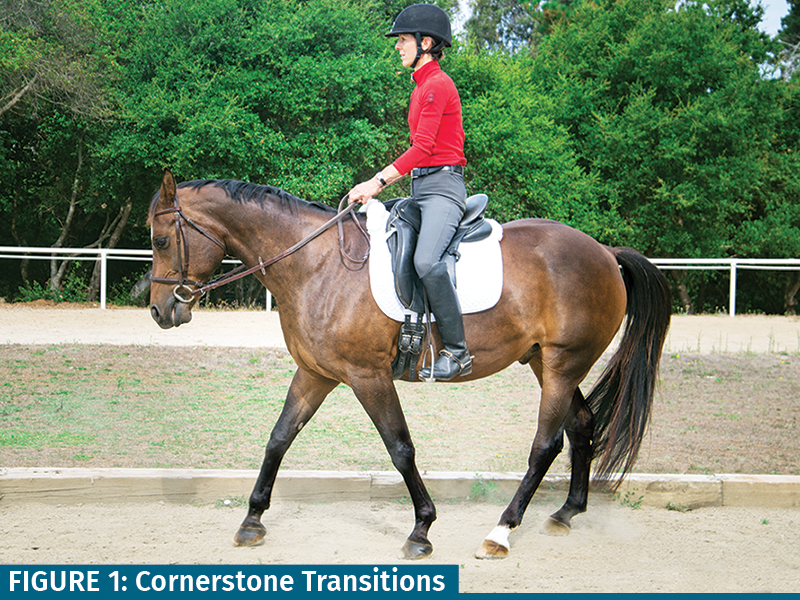
Jec Ballou
FIGURE 2 - Wavy lines: W Ride a scalloped edge around the track of your arena. Maintaining a brisk, lively walk tempo, ride a wavy serpentine with approximately three-metre loops back and forth from left to right to left to right.

Photo: Shutterstock/Rolf Dannenberg
Related: 8 Ways to Survive the Emotional Roller Coaster of Having an Injured Horse
Related: Rehabilitation for Horses and Return to Performance after Colic Surgery
Main Photo: Shutterstock/Rolf Dannenberg




